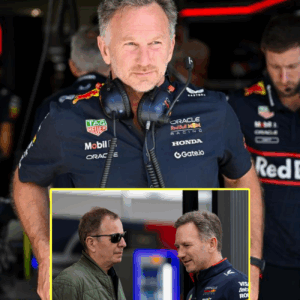The Zundapp KS 750, a motorcycle and sidecar combo from the World War II era, was developed by the German company Zundapp G.m.b.H for the German Wehrmacht (armed forces). This model entered service in 1941 and saw the production of over 18,000 units by 1944.
It was utilized across all major German battlefronts in a variety of roles during the Second World War. A distinctive feature of the KS 750 was its dual-driven wheel design; both the motorcycle’s rear wheel and the sidecar wheel were shaft-driven.
This functionality was powered by a 751 cc (45.8 cu in) flat twin engine with an overhead valve, boasting a bore of 75mm and a stroke of 85mm.
Background
In the late 1930s, as the political climate in Europe grew increasingly tense, the German military recognized the need for robust and versatile transportation vehicles that could support their expanding war efforts.
Motorcycles, known for their agility and speed, were identified as crucial for various military operations, prompting the search for a model that could withstand the rigors of combat and challenging terrains.
 Transmission: The KS 750 featured a four-speed gearbox with a reverse gear, unusual for motorcycles.
Transmission: The KS 750 featured a four-speed gearbox with a reverse gear, unusual for motorcycles.
This need led to the involvement of Zundapp, a reputable German motorcycle manufacturer with a history of producing reliable and durable bikes.
The company was tasked with creating a motorcycle that could not only handle the tough conditions of warfare but also provide flexibility in various roles, from reconnaissance to troop transport. Zundapp’s response to this military requirement was the development of the KS 750.
The design of the KS 750 was a significant departure from the conventional motorcycles of the era. It was built to be heavy-duty, with a focus on endurance and adaptability.
Zundapp KS 750
One of the most notable features was its 750cc engine, which was considerably more powerful than the engines in standard motorcycles at the time. This increase in power was necessary to ensure the bike could carry heavy loads, navigate rough terrains, and maintain performance in extreme weather conditions.
Another innovative aspect of the KS 750 was its sidecar design. Unlike typical sidecars of the period, which were merely attached for additional passenger capacity, the sidecar of the KS 750 was an integral part of the vehicle’s functionality.
 Off-road Capabilities: The motorcycle was designed for off-road use, with a high ground clearance and robust construction.
Off-road Capabilities: The motorcycle was designed for off-road use, with a high ground clearance and robust construction.
It was designed to be powered by the same shaft that drove the motorcycle’s rear wheel, a feature that greatly enhanced stability and control, particularly in off-road situations. This was a crucial adaptation, considering the diverse environments where the German military operated, from the deserts of North Africa to the snowy landscapes of the Eastern Front.
In addition to its mechanical prowess, the KS 750 was designed with practicality in mind. The motorcycle needed to be easy to repair and maintain, even in field conditions.
This practicality was reflected in features such as its horizontally opposed twin engine, known for its reliability and ease of maintenance, and the shaft drive, which was more durable and required less upkeep than a chain drive.
Design and Features
At the heart of its design was a robust 750cc engine, significantly more powerful than the engines typically used in motorcycles of that era. This choice of a larger engine was crucial, as it provided the necessary power and torque for the heavy-duty tasks expected of a military vehicle, from carrying equipment and personnel to navigating challenging terrains.
 Production Numbers: About 18,695 units of the KS 750 were produced.
Production Numbers: About 18,695 units of the KS 750 were produced.
A defining feature of the KS 750 was its sidecar, which was not merely an attachment for additional seating but an integral component of the motorcycle’s design. Uniquely, the sidecar wheel was powered, connected by a shaft drive that also drove the motorcycle’s rear wheel.
This innovative design provided enhanced traction and stability, particularly in off-road conditions, a vital attribute for a vehicle expected to perform in diverse and often harsh environments.
The KS 750’s engine was a horizontally opposed twin, a layout known for its balance and lower center of gravity, which contributed to the motorcycle’s stability and handling. This engine type was also recognized for its reliability and ease of maintenance, essential features for a vehicle that would often be serviced in field conditions.
Shaft Driven
Another notable aspect of the KS 750’s design was its use of a shaft drive system, rather than the more common chain drive found in most motorcycles of the time.
The shaft drive offered several advantages in a military context: it was more durable, required less maintenance, and was less susceptible to damage from elements like mud, dust, and debris – common challenges in wartime environments.
 Unique Steering System: It had a unique feature called the “trailing link” front fork, which was advanced for its time and provided better stability.
Unique Steering System: It had a unique feature called the “trailing link” front fork, which was advanced for its time and provided better stability.
The motorcycle’s structural design also reflected its intended use in demanding conditions. It featured a strong, reinforced frame to withstand the rigors of heavy loads and rough terrain. The suspension system was designed to provide a balance of comfort and stability, ensuring that the motorcycle could traverse uneven landscapes with relative ease.
In addition to its mechanical prowess, the KS 750 was equipped with practical features that enhanced its utility in combat situations. These included provisions for mounting weapons and additional equipment, as well as design considerations for ease of repair and maintenance under combat conditions.
Military Use
Its deployment spanned various roles, reflecting its versatility and reliability in the demanding conditions of warfare.Primarily, the KS 750 was used for reconnaissance missions. Its robust design and powerful engine allowed it to navigate challenging terrains with ease, making it ideal for gathering intelligence and conducting surveillance operations.
 Sidecar Equipped: It is well-known for its sidecar, which was equipped with a driven wheel, providing two-wheel-drive capability.
Sidecar Equipped: It is well-known for its sidecar, which was equipped with a driven wheel, providing two-wheel-drive capability.
The motorcycle’s ability to cover ground quickly and efficiently was crucial in these roles, offering the German military a significant advantage in mobility.
Another critical function of the KS 750 was rapid troop transport. In the fast-moving scenarios of the war, where quick response and mobility were key, the KS 750 enabled swift movement of soldiers across the front lines. This capability was particularly valuable in situations where larger vehicles were impractical or unavailable.
Wounded Soldiers
The KS 750’s design also allowed for the mounting of machine guns, transforming it into a mobile weapon platform. This adaptability meant that it could be used not just for transport or reconnaissance but also actively in combat, providing support and firepower where needed.
In addition to combat roles, the KS 750 was employed for logistical support. Its sidecar enabled it to carry supplies, equipment, and even wounded soldiers, serving as an essential vehicle for both frontline and behind-the-scenes operations. This aspect of its use underscored the KS 750’s role as a workhorse in the German military’s machinery.
 Fuel Efficiency: The KS 750 was relatively fuel-efficient for its time and purpose, with a fuel consumption of around 7 liters per 100 km.
Fuel Efficiency: The KS 750 was relatively fuel-efficient for its time and purpose, with a fuel consumption of around 7 liters per 100 km.
The motorcycle’s design features, such as the powered sidecar, enhanced stability and control, particularly in off-road and rough terrain conditions. This made the KS 750 a reliable choice in various environments, from the deserts of North Africa to the Eastern Front’s snow-covered landscapes.
Furthermore, the KS 750’s durability and ease of maintenance were highly valued in the field. Its ability to withstand heavy use and its straightforward repair process ensured that it remained operational even in the most challenging situations.
Zundapp Production and Numbers
The production and numbers of the Zundapp KS 750 during World War II reflect its importance as a military asset and the substantial demand for this robust motorcycle in the German armed forces. Production of the KS 750 commenced in earnest as the war escalated, with Zundapp responding to the growing need for reliable and versatile military vehicles.
Between 1940 and 1944, Zundapp manufactured approximately 18,000 units of the KS 750. This high production volume is indicative of the motorcycle’s integral role in the German military strategy. The KS 750 was not a mere auxiliary vehicle; it was a primary mode of transportation and operation, essential in various aspects of warfare.
 Influence on Post-War Designs: The design and technology of the KS 750 influenced post-war motorcycle and sidecar design, particularly in Europe.
Influence on Post-War Designs: The design and technology of the KS 750 influenced post-war motorcycle and sidecar design, particularly in Europe.
The production process of the KS 750 was a feat in itself, especially considering the challenging circumstances of the time. World War II placed immense pressure on manufacturing resources, with material shortages and the constant threat of Allied bombing raids.
Mechanization and Mobility
Despite these hurdles, Zundapp maintained a steady rate of production, a testament to the company’s commitment to the war effort and the motorcycle’s perceived value to the German military.
The KS 750’s production was concentrated in the Zundapp factories, which had to adapt to the changing conditions of the war. These facilities not only had to ensure the efficient assembly of the motorcycles but also had to manage the logistics of sourcing materials and parts in a war-torn economy.
Furthermore, the number of KS 750 units produced reflects the strategic shift in the German military’s approach to mechanization and mobility.
 Modern Replicas: There are modern replicas and restorations of the Zündapp KS 750, reflecting its status as a classic and collectible motorcycle.
Modern Replicas: There are modern replicas and restorations of the Zündapp KS 750, reflecting its status as a classic and collectible motorcycle.
The KS 750 was part of a broader move towards using more mechanized units in reconnaissance, combat, and logistics, a recognition of the changing nature of warfare and the need for rapid, adaptable, and reliable transportation.
The production and numbers of the Zundapp KS 750 during World War II were significant, both in terms of the volume produced and the impact these vehicles had on the German war effort. The KS 750 was not just another motorcycle; it was a crucial component of the German military’s operations, valued for its robustness, versatility, and reliability in some of the war’s most challenging theaters.
Zundapp Post War
After World War II, the KS 750, originally designed and used for military purposes, found new life in various civilian roles, reflecting its durable and versatile design.
In the immediate aftermath of the war, Europe was in a state of reconstruction, and there was a pressing need for reliable transportation. The KS 750, known for its robustness and adaptability, was well-suited to the challenging conditions of post-war Europe.
Many of these motorcycles were repurposed for civilian use, particularly in agricultural settings, where their power and stability were beneficial. In some areas, they were also adapted for everyday transportation, helping to fill the gap left by the scarcity of vehicles in the post-war period.
Beyond its practical uses, the Zundapp KS 750 gained a certain cultural and historical significance. It became a symbol of the era, representing both the technological advancements of wartime and the resilience in the face of adversity. For military enthusiasts and historians, the KS 750 is a prized collectible, sought after for restoration and preservation.





